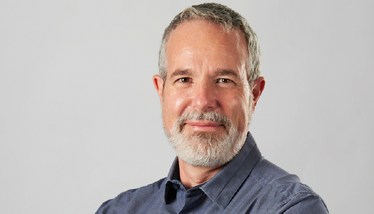Why Pharma Must Embrace AI and Open Source
With open minds and open sources, the future is foundational – and bright.
Brendan Frey | | 4 min read | Opinion

The cost of bringing new drugs to market is staggering, with the leading 20 global pharmaceutical companies collectively spending $145 billion in 2023 alone. One factor behind this number is the well-known challenge of pharma R&D productivity. From 2012 to 2022, inflation-adjusted industry R&D spending increased 44 percent, from about $170 billion to $247 billion. However, the number of US novel drug approvals remained flat at an average of 43 per year.
I believe the future of the industry must move towards advanced technology, such as AI-based drug discovery, and an open-source attitude. Techbio companies use AI models of biology to accelerate pharma R&D. AI researchers create technologies for answering widely ranging questions, and believe in concepts like scalability and open-sourcing. In contrast, traditional biotech and pharma tend to take a hypothesize-and-experiment approach and avoid open sourcing. A logical first step is recognizing that the two unique and critical disciplines and cultures must converge, or at a minimum, understand each other. AI researchers and biologists must become multilingual. Without understanding the languages colleagues speak, many companies inadvertently create a fractured culture without common ground.
Techbio companies and select universities are making significant strides to inspire a new generation of talented employees. To quote University of Washington Professor of Electrical & Computer Engineering, and Professor of Bioengineering, Georg Seelig: “We are teaching students to possess an engineering mindset steeped in experimental biology. By breaking down traditional silos, students can operate effectively in both wet labs, where biological samples such as drugs and fluids are present, and dry labs, where biological information is analyzed and interpreted using AI, ML and large language models.”
Imagine the impact when computational experts are thinking about how each step can help find more targets and molecules, while biologists are thinking about data collection and scale.
Another future state for the pharma industry is the expanded use of open-sourcing. With open-source software, the copyright holder grants users the right to use, modify, distribute, and leverage source code. The technology sector has done a great job of leveraging this, while the pharma industry usually views procedures, protocols, and technologies as proprietary.
Open sourcing can raise the tides for all and generate technologies to accelerate taking therapies to market. For example, one major company provides open access to more than 200 million protein structures to accelerate scientific research. While there is a vast difference between protein and other areas, such as RNA research, the reality is that there is a lot of information ideally suited for open sourcing to create a community and encourage learning, while increasing profitability.
The Medicine Maker Presents:
Enjoying yourself? There's plenty more where that came from! Our weekly Newsletter brings you the most popular stories as they unfold, chosen by our fantastic Editorial team!
It’s also important to keep an open mind about what AI can and cannot do. We’ve recently witnessed that narrow AI trained on one task can fail because it does not take into account upstream and downstream interdependencies. In contrast, foundation models are trained on massive datasets covering broad areas, enabling them to account for interdependencies and produce better results.
In the AI community, a foundation model is a very large machine learning model used for a range of tasks and trained on extremely large datasets. In drug discovery, a traditional, narrow AI model may be good at one task, such as predicting molecule-target interactions. A foundation model will have learned a wide array of fundamental aspects of biology and chemistry, enabling it to account for interdependencies between dozens of tasks and to be much more accurate for any one task.
RNA therapeutics are growing rapidly as an important modality, and we are seeing a corresponding growth in foundation models for RNA biology that predict gene regulation from DNA and RNA to protein. RNA foundation models can power target identification, leading to the discovery of druggable biological mechanisms, the prediction of molecule-target interactions, and the design of therapeutic and surrogate molecules for in vivo testing.
As an industry, we must take a visionary approach. It will take the right people and technologies, working in harmony, to move forward. The good news is that we are on a positive trajectory and the community is blazing the trail to decoding biology for the discovery of targets and therapeutics that will transform the lives of patients.
About the author
Brendan Frey, PhD is Head of Platform, Chief Innovation Officer, Founder, and board member of Deep Genomics, and co-founder of the Vector Institute for Artificial Intelligence. He has co-authored over 200 papers, including over a dozen in Nature, Science, and Cell. A pioneer in developing AI systems that could accurately predict normal and pathological cell and genome biology, facilitating biomedical breakthroughs, Frey’s work led to the discovery of new biology, the founding of Deep Genomics in 2015, the first AI system for predicting pathogenic mutations and identifying therapeutic targets, and the development of new therapeutic candidates for patients with genetic disorders.
A Professor of Engineering and Medicine at the University of Toronto and a Fellow of the American Association for the Advancement of Science, Frey is a Fellow of the Institute of Electrical and Electronic Engineers, a Senior Fellow of the Canadian Institute for Advanced Research, and a Fellow of the Royal Society of Canada. Brendan received his PhD from the University of Toronto in 1997.
Chief Innovation Officer and Founder, Deep Genomics, Innovation



















